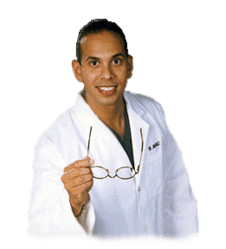Sciatica is a collection of symptoms in the low back, which radiate down one or both legs. Sciatica is generally caused by the compression or irritation of the sciatic nerve, the largest nerve in the human body. One of the most common health issues that cause sciatic nerve pain is called piriformis syndrome. The piriformis muscle stretches from the front of the sacrum, the triangle-shaped bone between the hipbones on the pelvis.
The piriformis muscle extends to the top of the femur around the sciatic nerve. The femur, as previously mentioned, is the large bone in the upper leg. The piriformis muscle functions by helping the thigh move from side to side. A piriformis muscle spasm, or any other type of injury and/or condition along the piriformis muscle, can place pressure on the sciatic nerve and cause pain and discomfort. The result is piriformis syndrome.
Piriformis Syndrome Causes and Symptoms
Sciatic nerve pain, or sciatica, is one of the most prevalent symptoms of piriformis syndrome. The pain and discomfort, however, may be felt in another part of the body. This is known as referred pain. Other common symptoms of piriformis syndrome include tingling sensations and numbness; tenderness; difficulty sitting along with pain while sitting and pain in the buttocks and thighs with physical activities.
The piriformis muscle can easily become damaged or injured from periods of inactivity or an excessive amount of exercise. Some common causes of piriformis syndrome include overuse; repetitive movements involving the legs; sitting for lengthy periods of time; lifting heavy objects; and extensive stair climbing. Sports injuries or automobile accident injuries can also harm the piriformis muscle and cause it to compress the sciatic nerve.
Piriformis Syndrome Diagnosis
A doctor appointment for diagnosis of piriformis syndrome may include a review of the patient’s health history, their symptoms, and other probable causes of their pain and discomfort. If you recall straining a muscle during physical activity, be sure to share that information with your doctor. The doctor may also perform a physical exam. The patient will participate in a series of range of movements to determine the cause of symptoms.
Some imaging tests may also be essential to help rule out other causes of piriformis syndrome. A CT scan or an MRI scan may help the healthcare professional determine whether even a herniated disc or arthritis is causing the patient’s pain and discomfort. An ultrasound of the piriformis muscle may also be helpful in diagnosing the problem if it seems that piriformis syndrome is causing the patient’s overall symptoms.

Piriformis syndrome is a health issue associated with the compression or impingement of the sciatic nerve around the piriformis muscle. Symptoms may include pain and discomfort, tingling sensations and numbness along the low back, or sciatica. Chiropractic care is a well-known alternative treatment option which can help reduce the compression of the sciatic nerve and improve piriformis syndrome.
Dr. Alex Jimenez D.C., C.C.S.T.
Piriformis Syndrome Treatment
Piriformis syndrome may often not need any treatment to relieve its symptoms. Just avoiding the physical activities which caused the pain and discomfort to manifest and rest can help improve the health issue. If symptoms do persist, however, alternating between ice and heat can help decrease pain. Apply ice for 15 to 20 minutes then use a heating pad on the affected area. Try that every couple of hours to help relieve symptoms.
Over-the-counter painkillers may also help decrease pain and discomfort. The symptoms associated with piriformis syndrome can go away with no additional treatment, however, if it doesn’t, the patient might benefit from alternative treatment options, such as chiropractic care or physical therapy. Chiropractic care is a treatment approach which utilizes spinal adjustments and manual manipulations to treat a variety of injuries and/or conditions.
A chiropractor, or doctor of chiropractic, may also provide piriformis syndrome relief through the use of transcutaneous electrical nerve stimulator, or TENS, treatment. A TENS device is a handheld unit which sends electrical charges directly to the affected region of the piriformis muscle. The nerves are then stimulated by the electric energy, which interferes with pain signals being transmitted to the brain.
The chiropractor or physical therapist may also recommend a series of lifestyle modifications, including physical activity guidance and nutritional advice. Various stretches and exercises can help improve the strength, flexibility, and mobility of the piriformis muscle. In severe cases of piriformis syndrome, corticosteroid injections or even surgical interventions may be required to help alleviate the symptoms. The scope of our information is limited to chiropractic as well as to spinal injuries and conditions. To discuss the subject matter, please feel free to ask Dr. Jimenez or contact us at 915-850-0900 .
Curated by Dr. Alex Jimenez
Additional Topics: Chiropractic for Athletes with Back Pain
Back pain is one of the most prevalent causes of disability and missed days at work worldwide. Back pain is the second most common reason for doctor office visits, outnumbered only by upper-respiratory infections. Approximately 80 percent of the population will experience back pain at least once throughout their life. The spine is a complex structure made up of bones, joints, ligaments, and muscles, among other soft tissues. Because of this, injuries and/or aggravated conditions, such as herniated discs, can eventually lead to symptoms of back pain. Sports injuries or automobile accident injuries are often the most frequent cause of back pain, however, sometimes the simplest of movements can have painful results. Fortunately, alternative treatment options, such as chiropractic care, can help ease back pain through the use of spinal adjustments and manual manipulations, ultimately improving pain relief.

EXTRA IMPORTANT TOPIC: Piriformis Syndrome Chiropractic Rehabilitation
Post Disclaimer *
Professional Scope of Practice *
The information herein on "Piriformis Syndrome Rehabilitation" is not intended to replace a one-on-one relationship with a qualified health care professional or licensed physician and is not medical advice. We encourage you to make healthcare decisions based on your research and partnership with a qualified healthcare professional.
Blog Information & Scope Discussions
Welcome to El Paso's Premier Wellness and Injury Care Clinic & wellness blog, where Dr. Alex Jimenez, DC, FNP-C, a board-certified Family Practice Nurse Practitioner (FNP-C) and Chiropractor (DC), presents insights on how our team is dedicated to holistic healing and personalized care. Our practice aligns with evidence-based treatment protocols inspired by integrative medicine principles, similar to those found on dralexjimenez.com, focusing on restoring health naturally for patients of all ages.
Our areas of chiropractic practice include Wellness & Nutrition, Chronic Pain, Personal Injury, Auto Accident Care, Work Injuries, Back Injury, Low Back Pain, Neck Pain, Migraine Headaches, Sports Injuries, Severe Sciatica, Scoliosis, Complex Herniated Discs, Fibromyalgia, Chronic Pain, Complex Injuries, Stress Management, Functional Medicine Treatments, and in-scope care protocols.
Our information scope is limited to chiropractic, musculoskeletal, physical medicine, wellness, contributing etiological viscerosomatic disturbances within clinical presentations, associated somato-visceral reflex clinical dynamics, subluxation complexes, sensitive health issues, and functional medicine articles, topics, and discussions.
We provide and present clinical collaboration with specialists from various disciplines. Each specialist is governed by their professional scope of practice and their jurisdiction of licensure. We use functional health & wellness protocols to treat and support care for the injuries or disorders of the musculoskeletal system.
Our videos, posts, topics, subjects, and insights cover clinical matters and issues that relate to and directly or indirectly support our clinical scope of practice.*
Our office has made a reasonable effort to provide supportive citations and has identified relevant research studies that support our posts. We provide copies of supporting research studies available to regulatory boards and the public upon request.
We understand that we cover matters that require an additional explanation of how they may assist in a particular care plan or treatment protocol; therefore, to discuss the subject matter above further, please feel free to ask Dr. Alex Jimenez, DC, APRN, FNP-BC, or contact us at 915-850-0900.
We are here to help you and your family.
Blessings
Dr. Alex Jimenez DC, MSACP, APRN, FNP-BC*, CCST, IFMCP, CFMP, ATN
email: coach@elpasofunctionalmedicine.com
Licensed as a Doctor of Chiropractic (DC) in Texas & New Mexico*
Texas DC License # TX5807
New Mexico DC License # NM-DC2182
Licensed as a Registered Nurse (RN*) in Texas & Multistate
Texas RN License # 1191402
ANCC FNP-BC: Board Certified Nurse Practitioner*
Compact Status: Multi-State License: Authorized to Practice in 40 States*
Graduate with Honors: ICHS: MSN-FNP (Family Nurse Practitioner Program)
Degree Granted. Master's in Family Practice MSN Diploma (Cum Laude)
Dr. Alex Jimenez, DC, APRN, FNP-BC*, CFMP, IFMCP, ATN, CCST
My Digital Business Card



